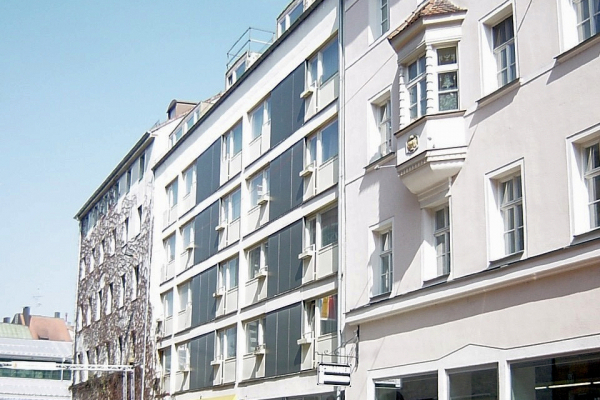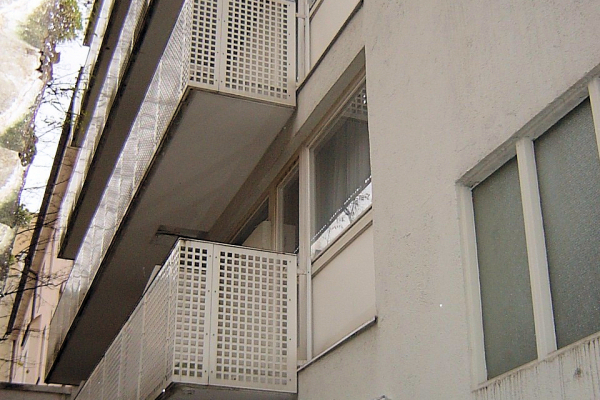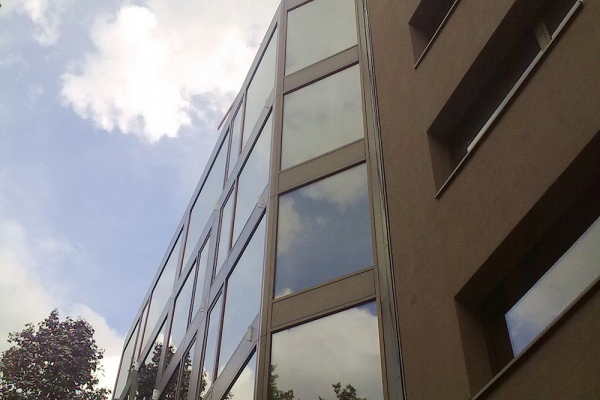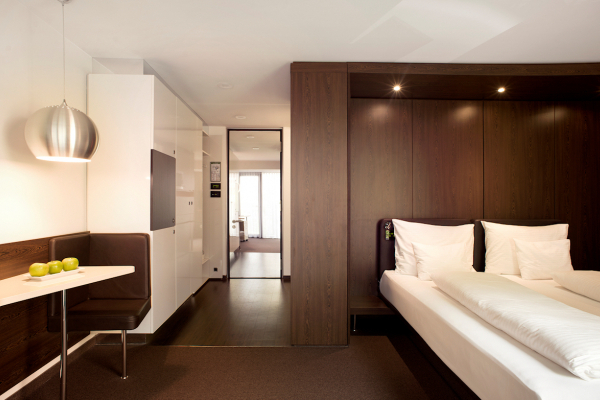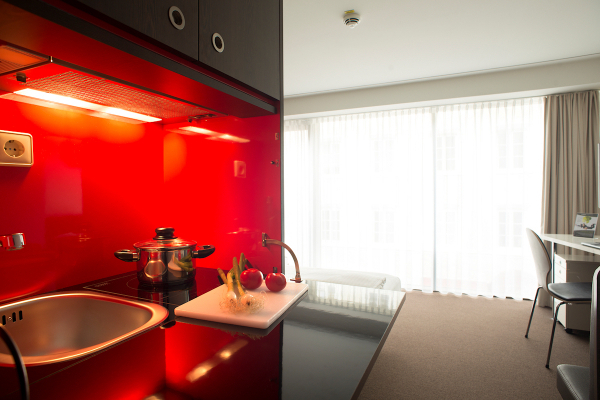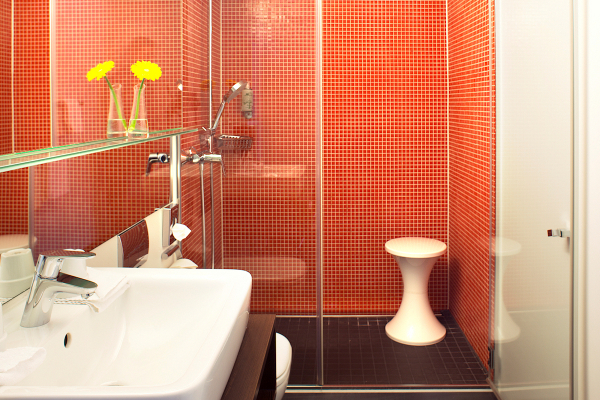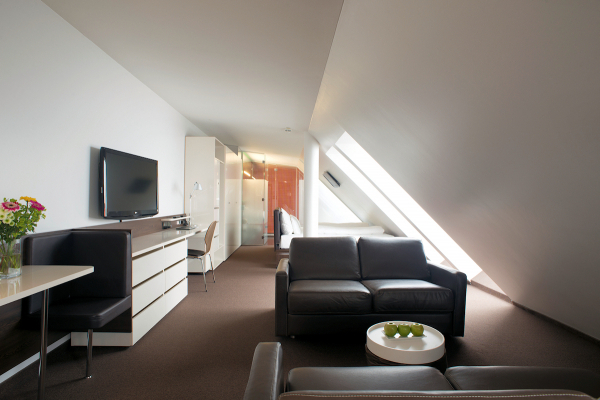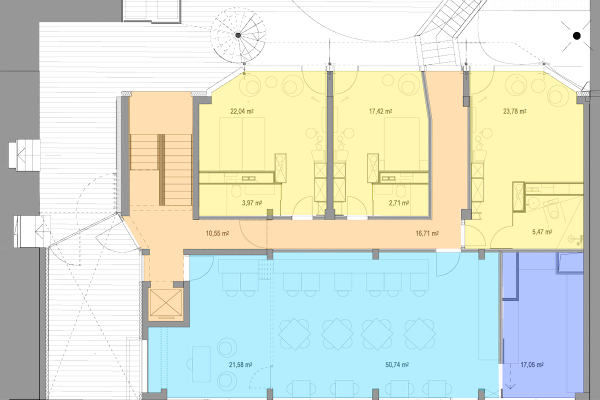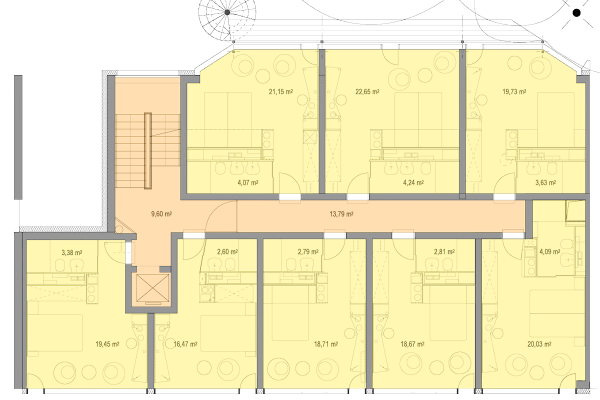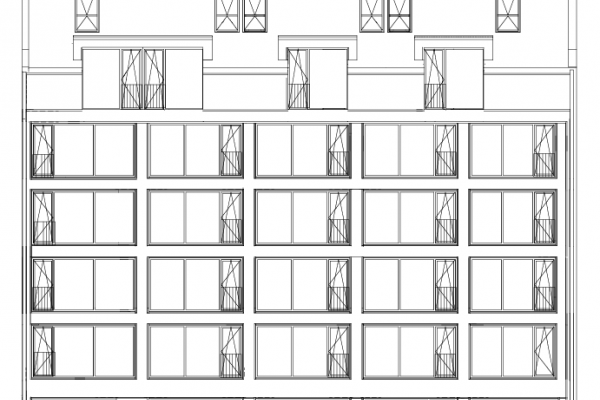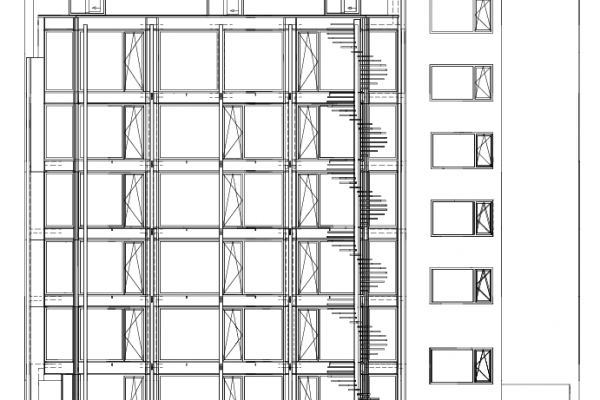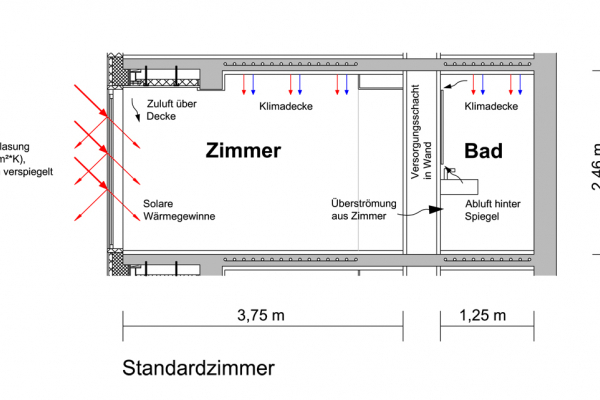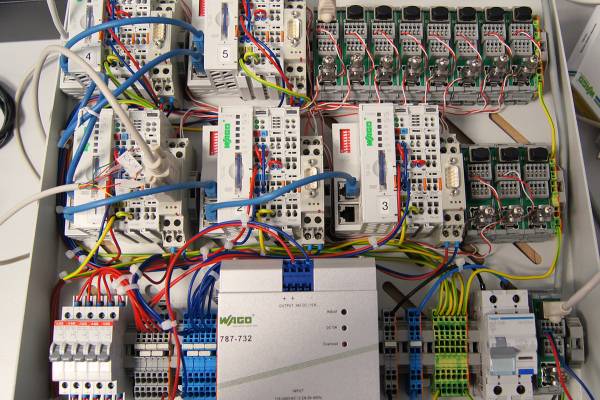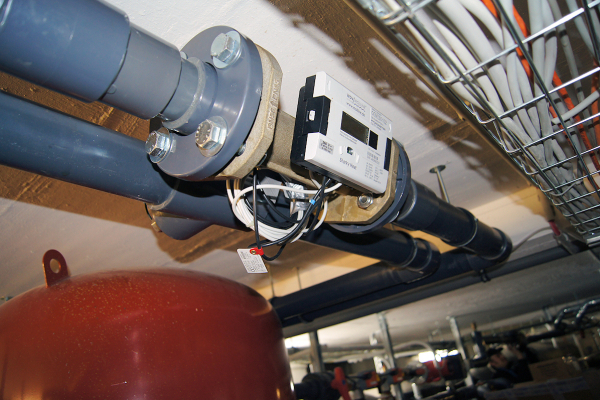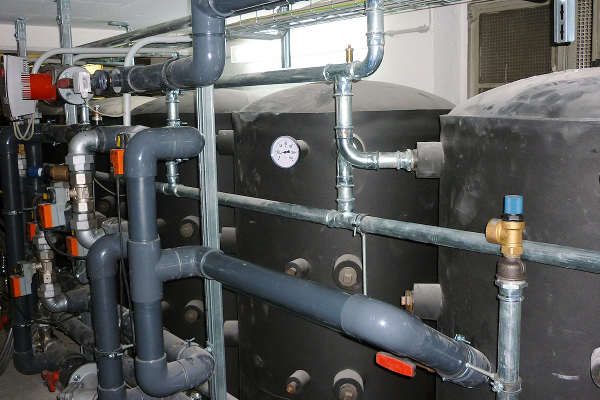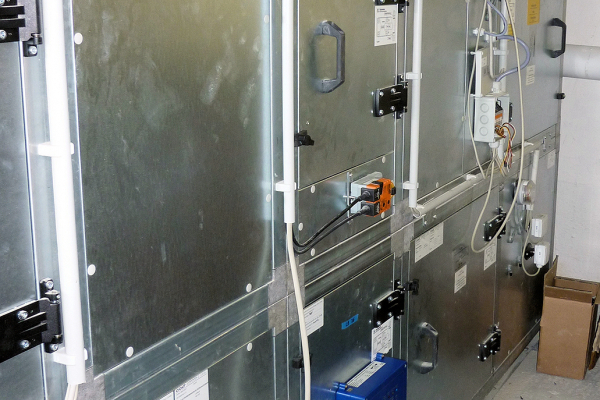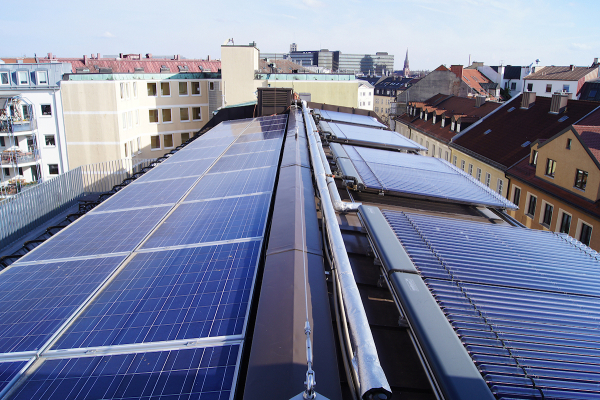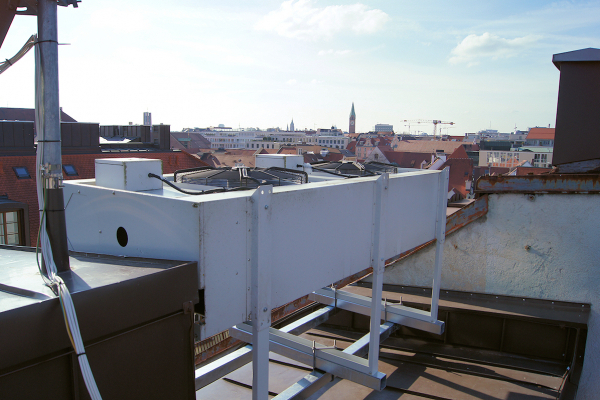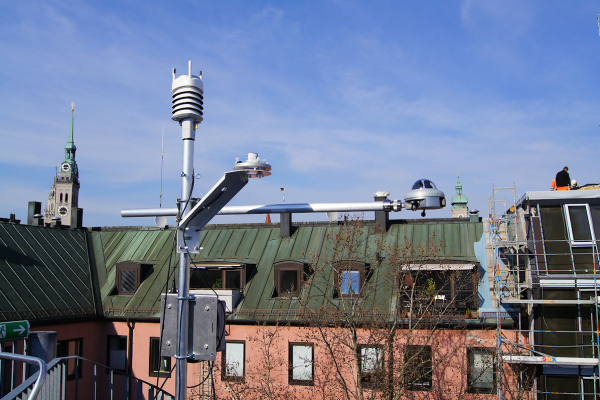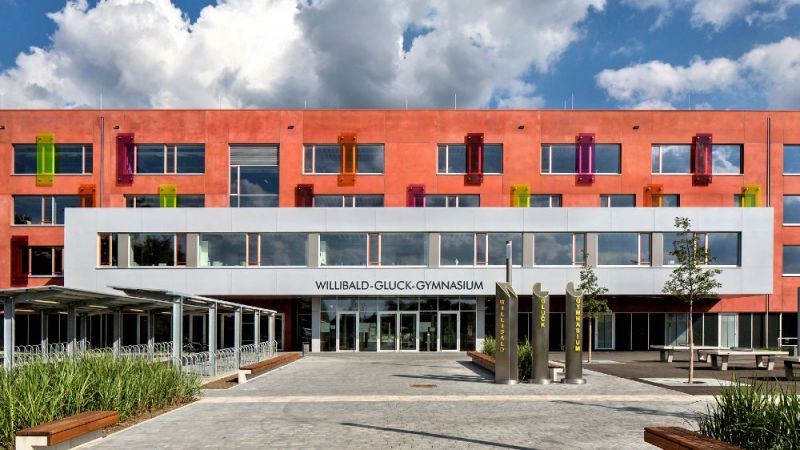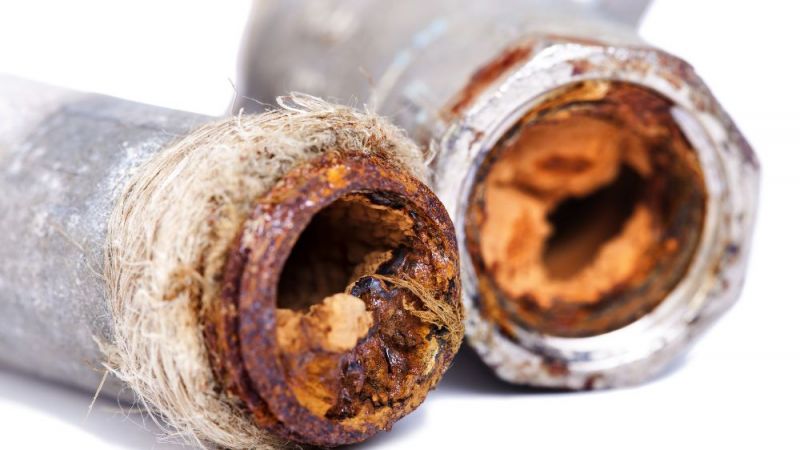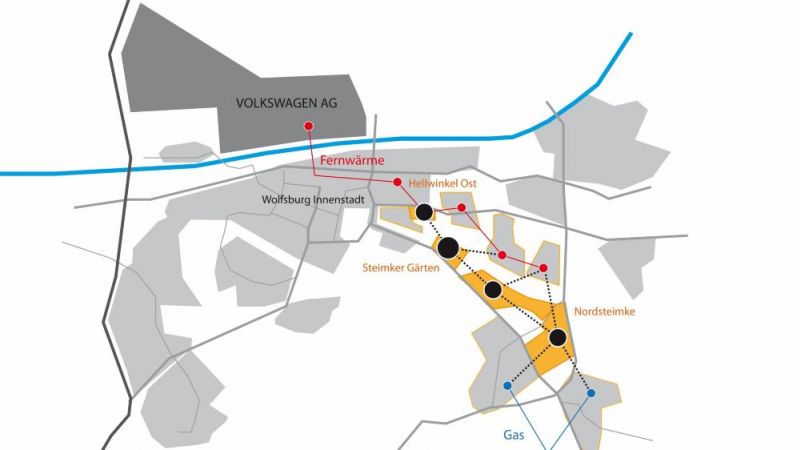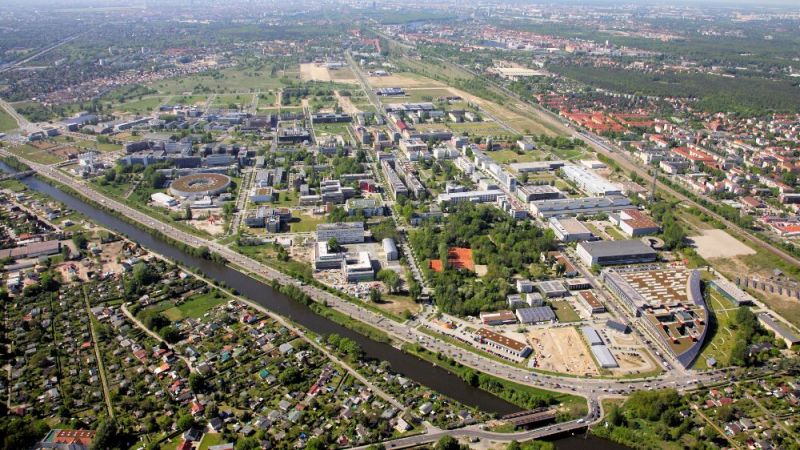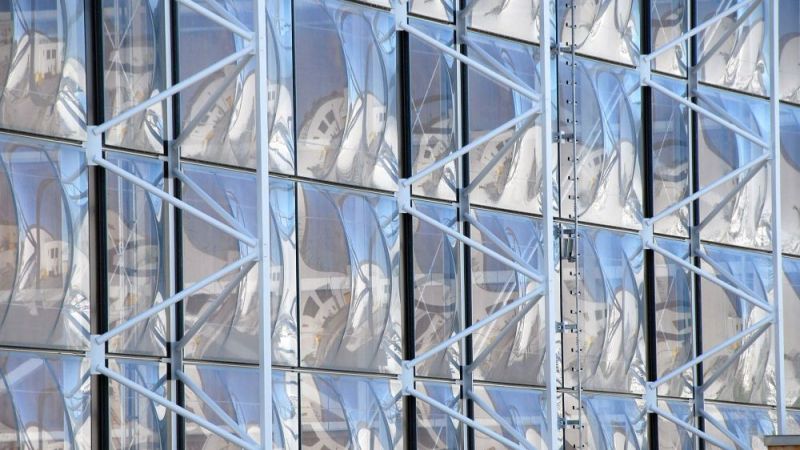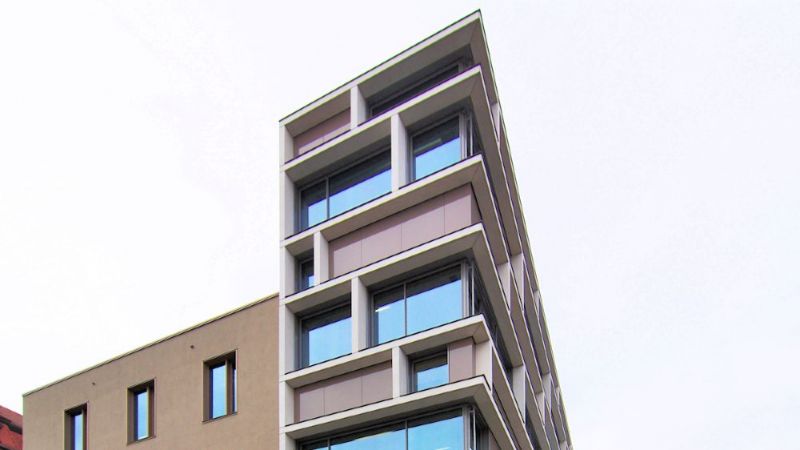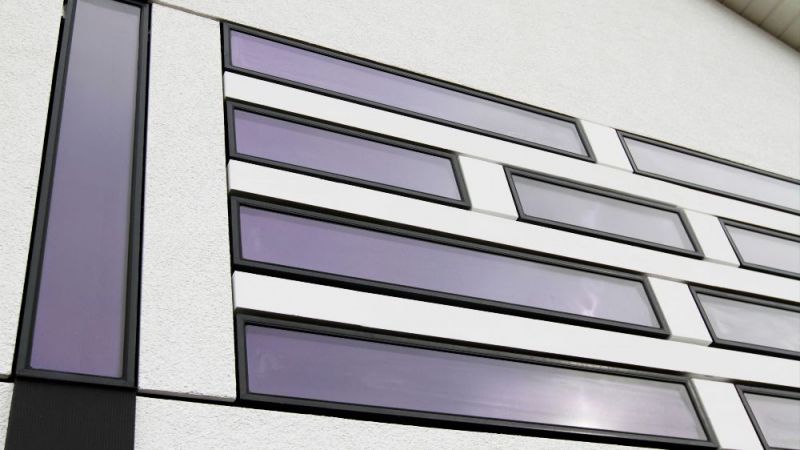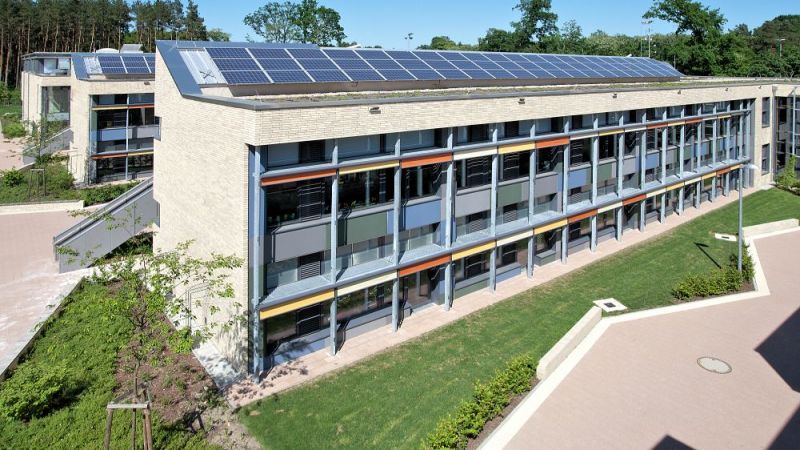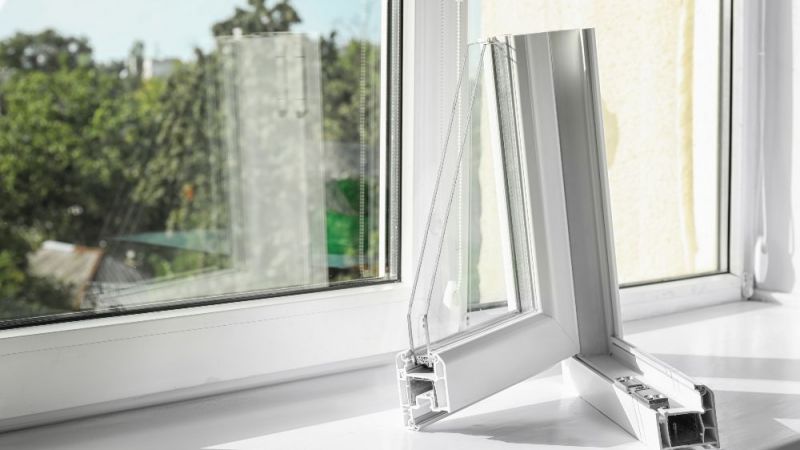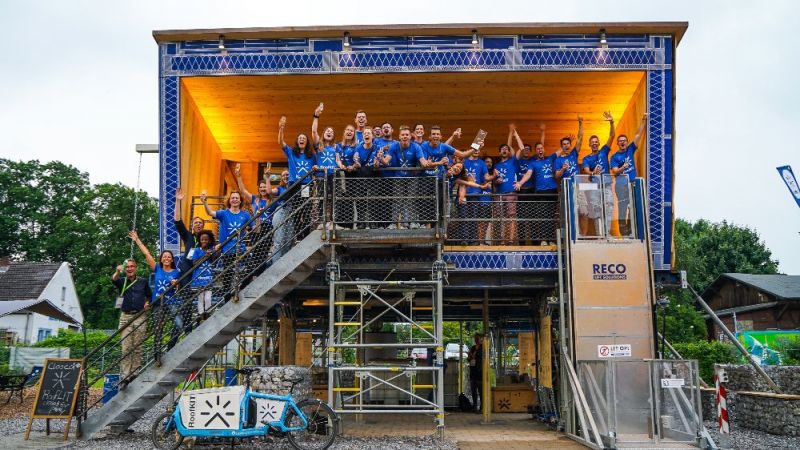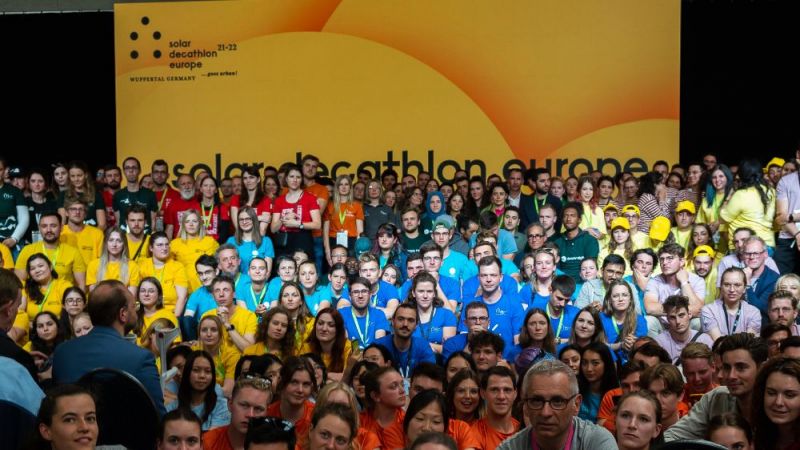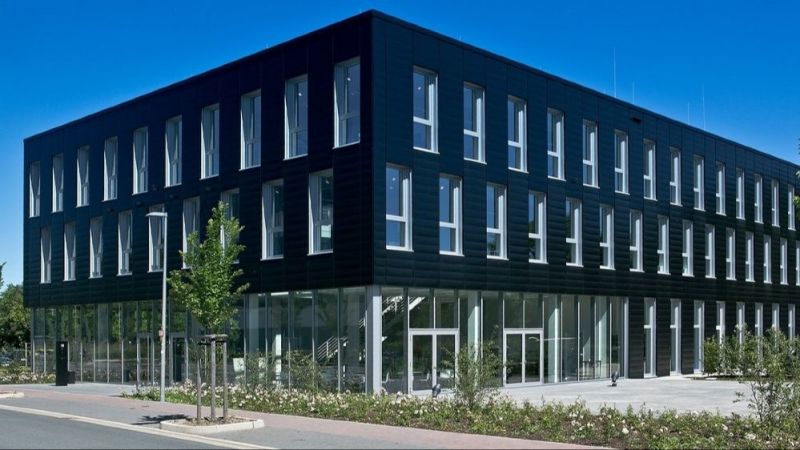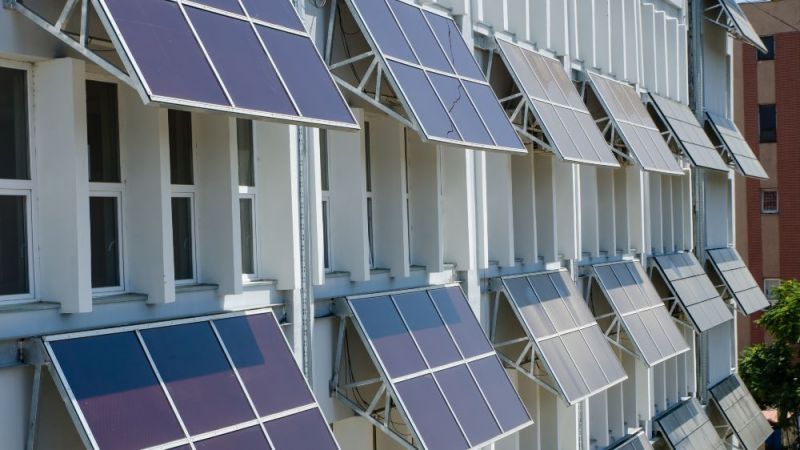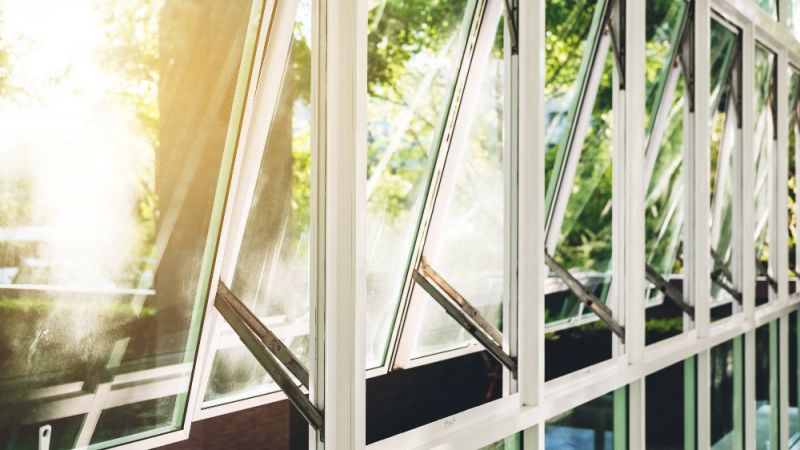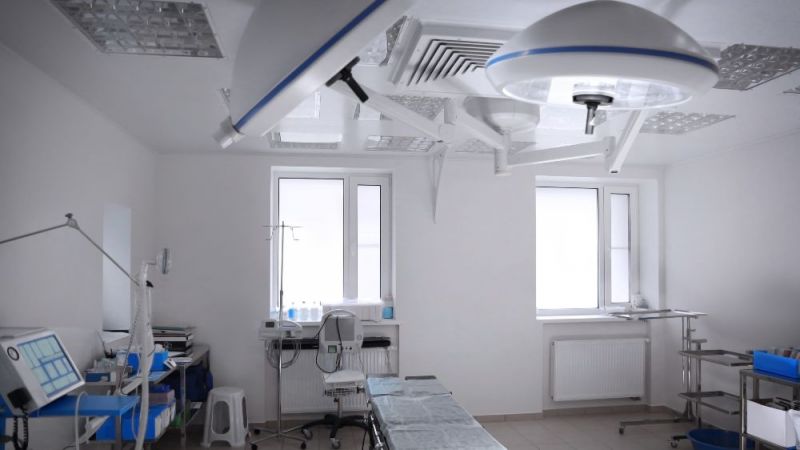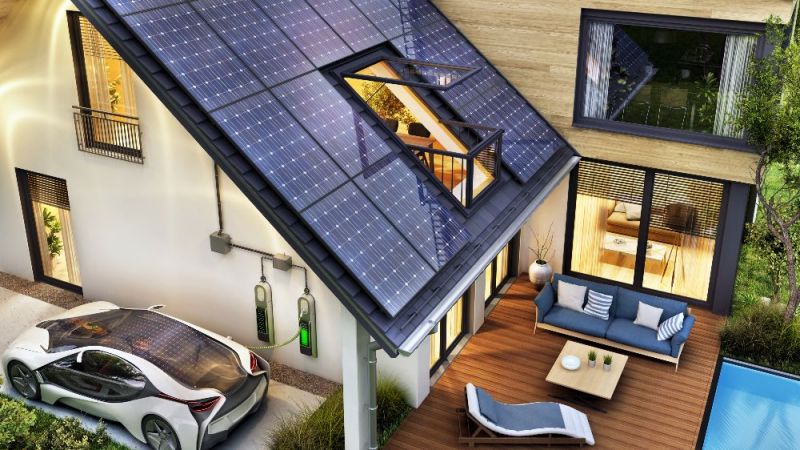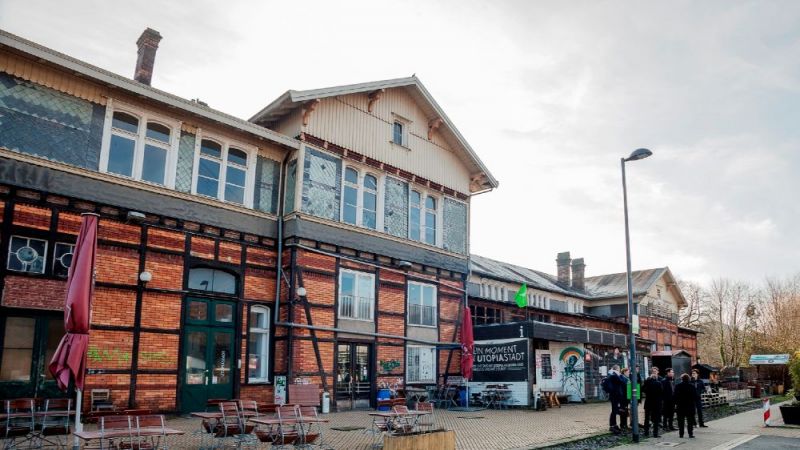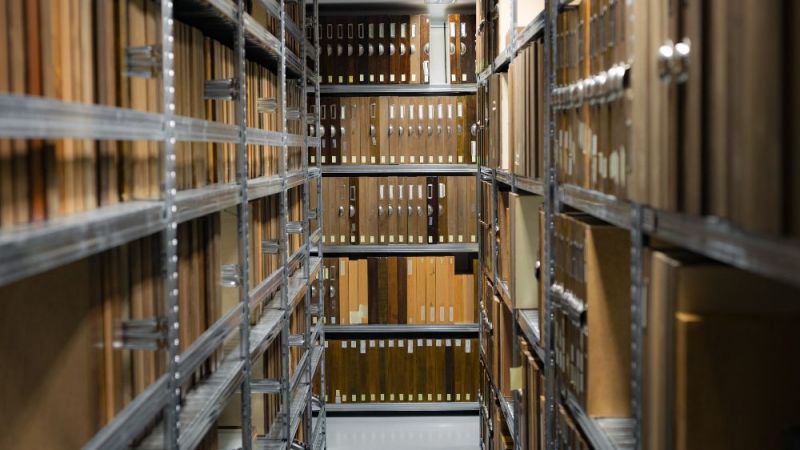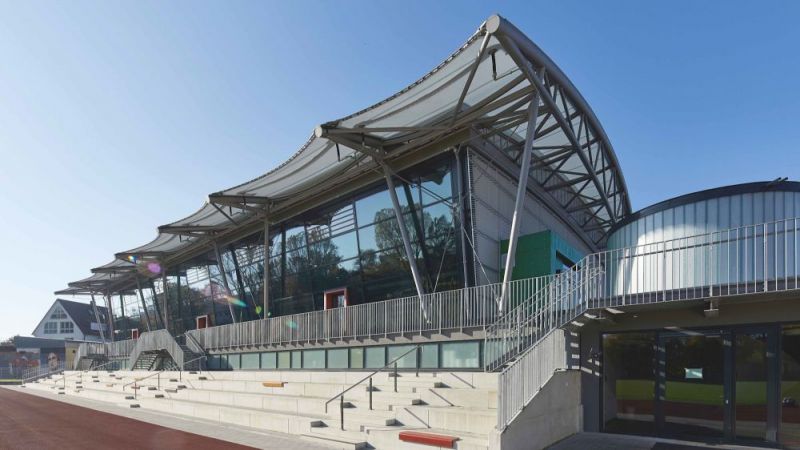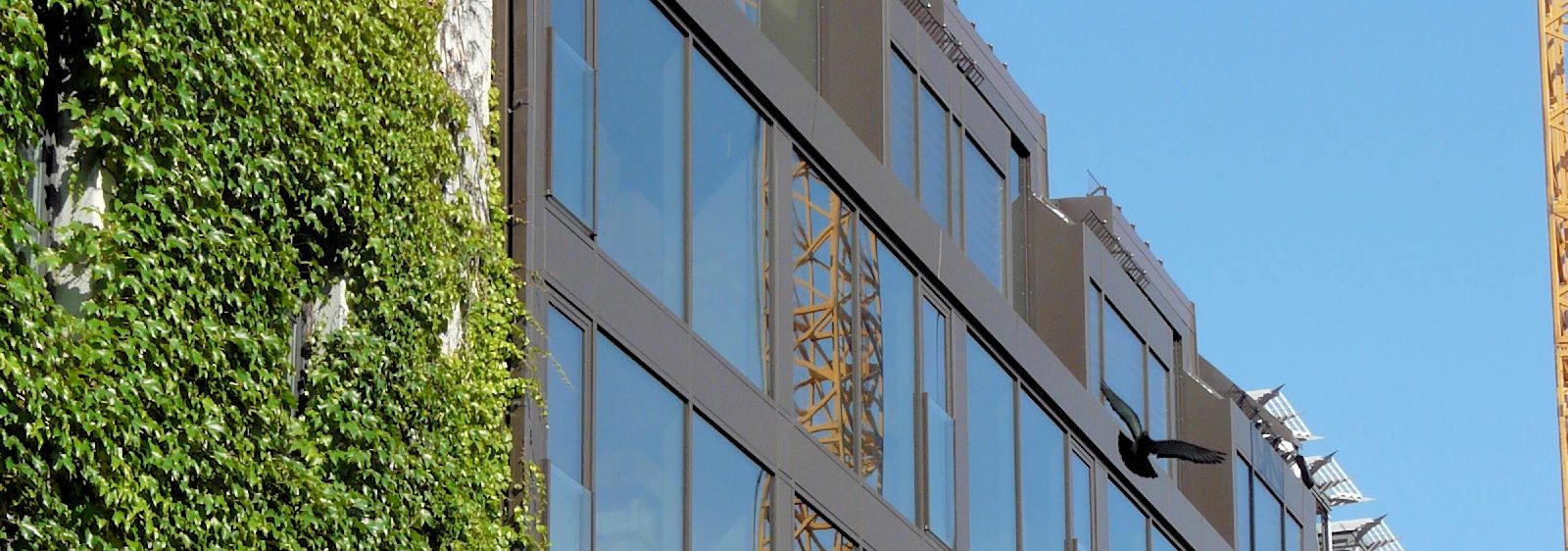
Room-based micro-heat pumps
Refurbishment to a sustainable hotel with a decentralised technology concept
In autumn 2011, a hotel chain opened in central Munich its first hotel conceived as a green building in accordance with the sustainability principles of the EU programme of the same name. The post-war building, which has undergone extensive refurbishment, has been designed in technical terms as an energy-efficient “electricity-only” building based on decentralised micro-heat pumps. This means that the energy required for heating, cooling and domestic hot water is largely provided by renewable energy and heat recovery. The hot water supply to the individual rooms is very sophisticated. Domestic hot water heating is provided separately for each room. This also ensures hygiene with regard to the legionella problem.
The “Hotel am Viktualienmarkt” owes its name to the flower market, founded in 1843, which used to be held in the neighbouring Schrannenhalle. The operator of the Derag Livinghotels hotel chain wanted to completely renovate the somewhat dilapidated residential home in the Utzschneiderstrasse, modernise it and adapt it to become a luxury hotel. Special attention was given to the problem of legionella in the domestic hot water. Normally – and especially in hotels with an often very sporadic hot water requirement – this problem is countered with high hot water supply temperatures or decentralised boilers, both of which are energy-intensive. In this project, however, it was intended to develop a new energy-efficient approach: in every hotel room a decentralised technology station based on a very small, micro-heat pump provides space heating, hot water, cooling and hygiene ventilation. Via a so-called neutral feed, all rooms are linked at a comparatively low temperature level and are also connected to the central hot water and cold water storage system. Owing to the considerable complexity of the overall system and the necessary control technology it was decided that the systems should undergo scientific evaluation.
Research focus
As the complexity of the building technology increases, so does the risk that the system components do not work together as planned. The scientific monitoring, which started in April 2013, is monitoring the centralised and decentralised system components along with the control strategy, and is recording the relevant energy flows for a period of two years. Based on this, the innovative energy concept can be evaluated and optimised during operation. The investigation is being supplemented with surveys on the user comfort as well as an inter-project and comparative performance analysis.
A new approach are the 47 micro-heat pumps that are installed in the individual rooms. In combination with short- and long-term heat storage tanks, the solar collector system and the twin-feed heating network, they are designed to balance out the energy requirements and energy surpluses in the building without the need for additional heating or cooling systems. The considerable decentralisation requires a high degree of control quality and also places high demands on the scientific monitoring. The research is focusing on both the efficiency and functioning of the decentralised systems and system components, including all auxiliary flows, as well as on the entire building and its energy balance. To achieve this, all important electrical and thermal energy flows in the hotel are being recorded. The main systems (neutral feed, storage and generation systems, ventilation systems, steam generation) are being recorded completely, while at room level a representative sample of twelve apartments is being measured in full detail. The measurements are being supplemented with information from the existing building control management system and from the system operators in order to enable the partial results from all hotel rooms to be precisely extrapolated.
Concept
Refurbishment concept
The architectural concept for the building was designed to achieve the best possible energy balance. The 43 hotel rooms, which are designed in a contemporary style, aim to provide the hotel guests with the utmost comfort. Steam from an central generation system supplies the steam showers in the rooms and is also used for any cleaning work. This enables the hotel to be operated at the highest hygienic standard almost without cleaning agents and solvents. All rooms are also furnished with “oil-vital-beds”, which are designed to be particularly comfortable. The apartments are furnished to a high design standard and are equipped with a complete kitchen or kitchenette to allow for longer stays.
Energy concept
A special feature of the energy concept is the small-output, micro-heat pump in each room, which provides heat and hot water within each room and apartment. The different rooms are linked via a neutral feed at a comparatively low temperature level. The heating and cooling energy is transferred to the rooms via a cooling ceiling and the ventilation system. This enables each room and apartment to utilise the surplus heat from other rooms or from the central heat storage system. Heating or cooling energy that cannot be immediately deployed is stored for later use in the central buffer systems. The building services technology is supplemented with a solar thermal system and a system for free cooling. Backup systems ensure the uninterrupted supply of heating and cooling energy in the event of emergencies.
Performance and optimisation
The extraordinary energy concept with its many decentralised heat pumps located in the rooms has proven its value in everyday use. A number of critical issues have been identified which need to be further optimised before the concept is offered for broad application. In particular, the consumption of auxiliary energy to distribute low-temperature heat is relatively high – the circulating pump in the neutral feed network alone accounts for about 20 per cent of the power consumption of the building services equipment.
The thermal inertia of the otherwise energetically advantageous surface heating and cooling systems proves to be problematic since their slow reaction time does not immediately meet the occupants’ expectations during the readjustment. The problem is further exacerbated by the fact that the heat exchange values of the heating-cooling ceiling are significantly lower than specified by the manufacturer. These findings will be incorporated into the further development of the system.
A retroactive integration of recooling by means of free cooling or a chiller could not be carried out in the required capacity due to a structural limitation so that electricity/cooling efficiency remains below the possibilities.
For the building type hotel, this project shows that the power consumption of building services equipment accounts for only about 50 per cent of the total consumption. There is a considerable savings potential in other areas that will have to be systematically explored in future projects – for example, the high occupant-specific consumption in kitchens or laundries.
In 2016, an external solar protection system was installed in the hotel to reduce cooling loads. This reduces the summer load in the rooms and will reduce cooling energy consumption by about 15 per cent in the future.
As a test, the climate control ceiling in one room was replaced with a product from another manufacturer. The cooling output immediately improved by a factor of 2 to 3 due to higher temperature differences to the indoor air. The pump of the neutral pipe feed system – it is one of the large auxiliary energy consumers – has been replaced by another make. The task here was to adapt the optimum pump operation to the real volume flow demand. This measure has lowered the power consumption of the pump by almost 30 per cent. In addition, the frequency of fault reports was significantly reduced. Faults had occurred due to briefly fluctuating volume flows caused by the switch from single to double pump operation.
As regards refrigeration, an analysis of free cooling showed that almost 35 per cent of the cooling could be produced with this principle during the transitional period, provided that the program parameters would allow the cold accumulators to be loaded at night as well. So far, only 3 to 4 per cent of the cooling has been provided via free cooling during the transitional period. This is an easy to exploit optimisation potential, which can significantly reduce the power input for compression refrigeration.
Cost-effectiveness and durability
According to available data, the energy costs of hotels are estimated to be about 5 to 8 per cent of the total turnover. The hotel in Munich achieves an energy cost ratio of only 1 to 2 per cent or 4.30 euros per night. These are – with relatively high room prices in central Munich – pleasingly low values. Energy costs per room and year are rather low at 1,112 euros compared to literature values. They are on the level of a small single-family home or a larger apartment in multi-storey dwelling.
The decentralised energy system with micro-heat pumps was conferred the 2014 Bavarian Energy Award on 15 October 2014. A short video (1:06) from BayernInnovativWebTV presents the energy concept.
19.11.2021


